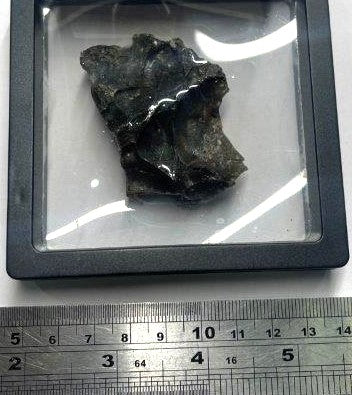Impactite Darwin Glass- Australian Moldavite (816,000 years ago)
Impactite Darwin Glass- Australian Moldavite (816,000 years ago)
Couldn't load pickup availability
Originating from a powerful meteorite impact approximately 816,000 years ago, Darwin Glass is a remarkable impactite found exclusively in a strewn field surrounding the Darwin Crater in Western Tasmania, Australia. Often referred to as "Australian Moldavite" for its similar formation process and glassy composition, Darwin Glass is a geologically distinct material with its own unique characteristics and scientific significance.
Formed when the immense energy of the extra-terrestrial impact melted the local Siluro-Devonian quartzite and slate, Darwin Glass is a natural glass or "impactite." Its chemical makeup is a fascinating blend of the melted terrestrial rock and trace amounts of extra-terrestrial material from the impacting body. The rapid cooling of this molten debris as it was ejected high into the atmosphere created the distinct forms of this rare material. While some pieces are a translucent olive-green, others are a darker, more opaque black, with the darker varieties often containing a higher concentration of the meteorite's own material.
Darwin Glass is a crucial subject of study for planetary scientists and geologists, as it offers a physical record of a hypervelocity impact event. Inclusions of ancient organic matter, such as preserved plant material, have been discovered within the glass, providing invaluable insights into the prehistoric environment of Tasmania. This unique property has also made it a subject of research for the theory of panspermia, which speculates on the possibility of life being transported between planets via impact-ejected material.
Due to its limited and protected locality, Darwin Glass is a highly sought-after specimen for collectors and researchers alike. It represents a rare and tangible link to a cataclysmic cosmic event, offering a window into both the history of our planet and the wider solar system.
SKU:11591
View full details





